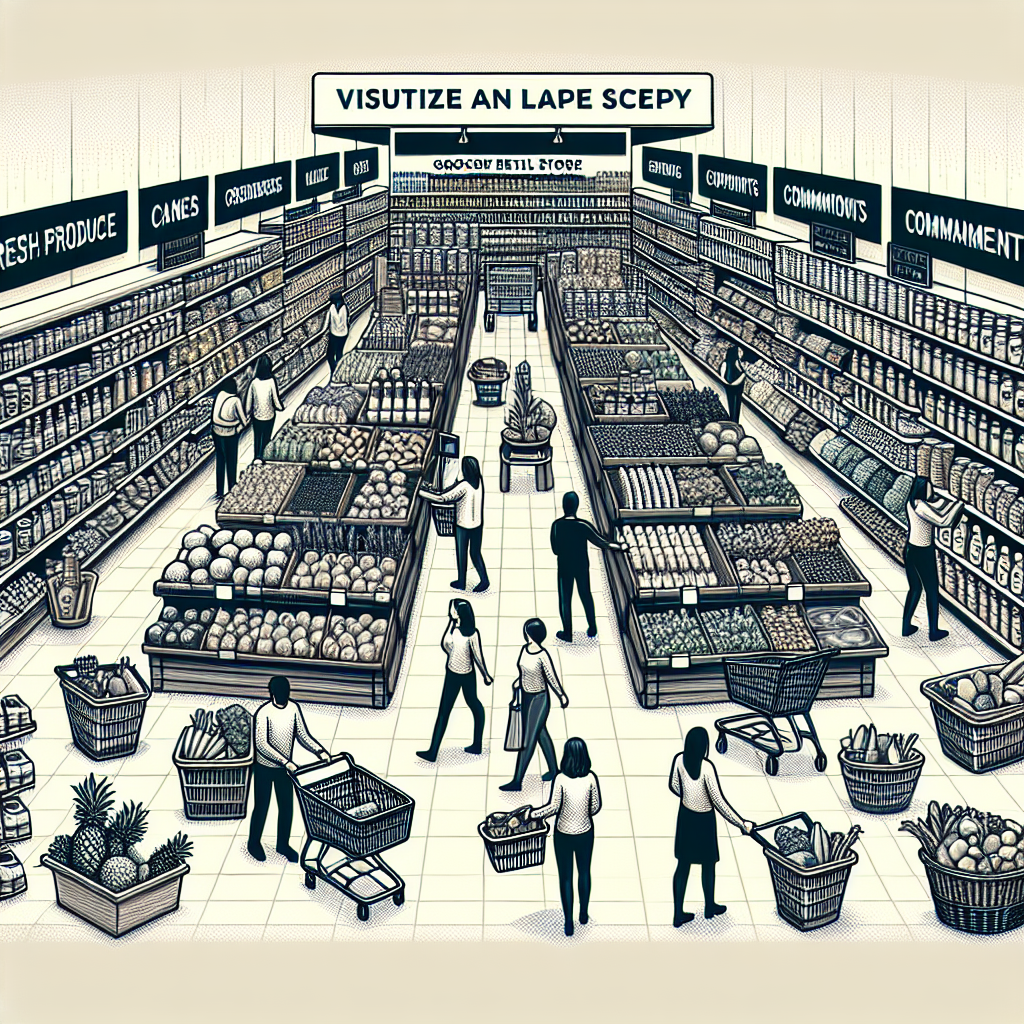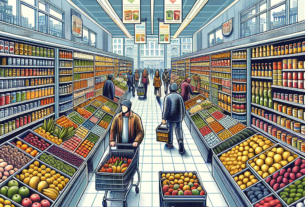The State of the Global Grocery Retail Industry in 2025: Trends, Challenges, and Opportunities
The grocery retail industry has undergone significant transformations in recent years, driven by changing consumer preferences, technological advancements, and the impact of the COVID-19 pandemic. In this report, we will explore how grocery retailers are adapting to post-pandemic shopping trends and what the future holds for the industry.
Impact of the COVID-19 Pandemic on Grocery Retail
The COVID-19 pandemic had a profound impact on the grocery retail industry, prompting a shift in consumer behavior and shopping habits. As lockdowns and social distancing measures were implemented, consumers turned to online grocery shopping in record numbers. According to a report by Statista, global online grocery sales reached $370 billion in 2020, a 30% increase from the previous year.
Traditional brick-and-mortar retailers were forced to adapt quickly to the changing landscape, implementing safety measures such as contactless payment options, curbside pickup, and increased sanitation protocols. Many retailers also ramped up their e-commerce capabilities, investing in online ordering platforms and expanding their delivery services.
Key Trends in Post-Pandemic Grocery Shopping
As the world begins to emerge from the pandemic, several key trends are shaping the future of grocery retail. One of the most notable trends is the continued growth of online grocery shopping. According to a report by eMarketer, global e-commerce sales are expected to reach $5.4 trillion by 2022, with grocery accounting for a significant portion of that growth.
Another trend is the rise of health and wellness products in grocery stores. Consumers are increasingly prioritizing health and wellness, leading to a surge in demand for organic, plant-based, and functional foods. Retailers are responding to this trend by expanding their selection of health-conscious products and promoting wellness initiatives in-store.
Personalization is also becoming a key focus for grocery retailers. With the help of data analytics and artificial intelligence, retailers are able to offer personalized recommendations and promotions to shoppers based on their preferences and purchase history. This level of customization not only enhances the shopping experience but also helps retailers drive sales and build customer loyalty.
Challenges Facing Grocery Retailers
While there are many opportunities for growth in the grocery retail industry, there are also several challenges that retailers must navigate. One of the biggest challenges is the rise of e-commerce giants such as Amazon and Alibaba, which are rapidly expanding their presence in the grocery market. These tech giants have the resources and infrastructure to dominate the online grocery space, posing a threat to traditional retailers.
Labor shortages and supply chain disruptions are also causing headaches for grocery retailers. The labor market is tightening, making it difficult for retailers to find and retain qualified employees. At the same time, supply chain disruptions, exacerbated by the pandemic, are leading to product shortages and delivery delays. Retailers are having to adapt quickly to these challenges, finding innovative solutions to keep their shelves stocked and customers satisfied.
Opportunities for Growth
Despite the challenges facing the industry, there are many opportunities for growth in the grocery retail sector. One of the biggest opportunities lies in the expansion of online grocery shopping. As more consumers embrace e-commerce, retailers have the chance to capture a larger share of the market by investing in their online platforms and improving the shopping experience for customers.
Another opportunity for growth is the adoption of new technologies such as artificial intelligence and automation. These technologies can help retailers streamline operations, reduce costs, and enhance the customer experience. For example, automated checkout systems and robotic order fulfillment can help retailers improve efficiency and reduce labor costs.
In addition, there is growing demand for sustainable and eco-friendly products in the grocery market. Consumers are increasingly conscious of the environmental impact of their purchases and are seeking out products that are produced ethically and sustainably. Retailers that prioritize sustainability and offer a wide selection of eco-friendly products stand to attract a loyal customer base and drive sales.
Case Study: Walmart
Walmart, one of the world’s largest grocery retailers, has been at the forefront of adapting to post-pandemic shopping trends. The company has invested heavily in its e-commerce capabilities, expanding its online grocery pickup and delivery services to meet growing demand. Walmart has also focused on improving the shopping experience for customers, introducing features such as contactless payment options and in-store navigation tools.
In addition, Walmart has embraced the health and wellness trend by expanding its selection of organic and plant-based products. The company has also made sustainability a priority, committing to reduce its carbon footprint and eliminate waste in its operations. By staying ahead of trends and prioritizing customer needs, Walmart has positioned itself for continued success in the evolving grocery retail landscape.
Conclusion
In conclusion, the grocery retail industry is undergoing a period of rapid change and transformation. As consumers continue to shift towards online shopping and prioritize health and wellness, retailers must adapt quickly to meet changing demands. By investing in e-commerce, embracing new technologies, and prioritizing sustainability, grocery retailers can position themselves for growth and success in the post-pandemic era.
Overall, the future of the grocery retail industry is bright, with opportunities for innovation and expansion. By staying ahead of trends, addressing challenges, and seizing opportunities for growth, retailers can thrive in the competitive and evolving market landscape.
For more information on the state of the global grocery retail industry, visit CulinaryCoverage.com.



